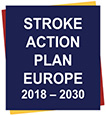Key Performance Indicators
Key Performance Indicators
1
A national stroke plan defining pathways, care and support after stroke including pre-hospital phase, hospital stay, discharge and transition, and follow-up.
2
At least one individual from the respective Stroke Support Organisation SSO (if existent) will be involved and supported, in an equal way, during the development of each country’s national stroke plan or stroke related guideline.
3
A national strategy for multi-sectorial public health interventions promoting and facilitating a healthy lifestyle and risk factor control has been implemented.
4
Establishment of national and regional level systems for assessing and accrediting stroke clinical services, providing peer support for quality improvement, and making audit data available to public.
5
All stroke units and other stroke services independent of sector undergo quality auditing continuously or with regular time intervals.
6
Access to stroke unit care for patients with acute stroke.
7
Recanalisation treatment (intravenous thrombolysis and mechanical thrombectomy) rate provided for patients with ischaemic stroke.
8
Mandatory access to: CT/MRI, vascular imaging, ECG, long-term ECG-monitoring, cardiac echo (TTE, TOE), dysphagia screening, and blood tests during stroke unit admission.
9
Access to early stroke unit rehabilitation including early supported discharge.
10
Access to basic secondary prevention including antithrombotics, antihypertensives and statins as well as life style advice.
11
A binding personalised, documented rehabilitation and sector transition plan provided at the time of discharge.
12
Follow-up at 3-6 months after the stroke incident including a Post Stroke Check list and a functional assessment and referral for relevant interventions.
13
Short-term mortality after stroke is monitored and at acceptable levels.




